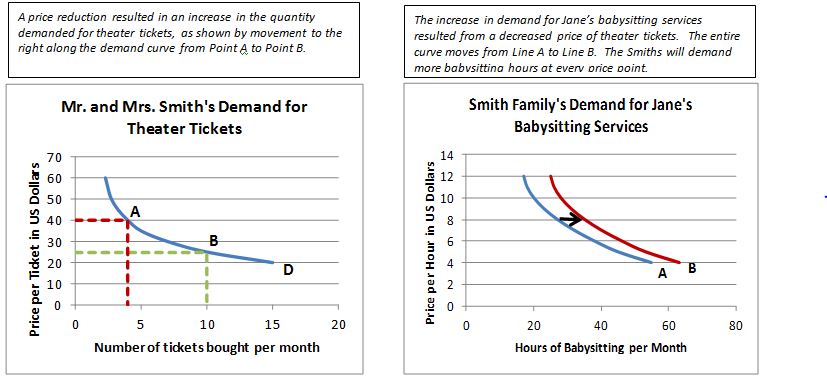Change in Quantity Demanded
View FREE Lessons!
Definition of a Change in Quantity Demanded:
A
change in the quantity demanded is the change in the number of units consumers are willing to purchase that results from a change in the price of that good or service.
Detailed Explanation:
The law of demand tells us that a change in the price will result in a change in the
quantity demanded of a good or service. When sellers increase the price of the service or good they offer, consumers normally reduce the quantity they purchase. Conversely, when sellers have a sale, it is to attract buyers and sell more. A change in the quantity demanded is illustrated by movement along the demand curve.
It is important to distinguish between a change in the quantity demanded and a change in demand. Many variables can change the demand for a product. These include a change in income, a change in the price of related products, the number of buyers, future expectations, or a change in tastes. Let’s use an example of babysitting and theater tickets to illustrate the relationship and differences between a change in demand and a change in the quantity demanded by using the graphs below.
The Smiths love the theater and are thrilled to learn the local theater recently dropped its price from $40 to $25 per ticket. The Smith’s demand curve shows that they would increase the quantity of tickets they purchase from four to ten per season. This increase in the quantity demanded is illustrated by a movement along the demand curve from point A to point B.
The Smiths have a three-year-old daughter and use Jane to babysit when they attend plays. Their demand for Jane’s services just increased due to the drop in ticket prices. Theater tickets and babysitting are complements. Note that the demand for Jane’s babysitting has increased even though she has not changed her price. In fact, the demand for her services increased at all prices. This increase in demand is illustrated by a rightward shift in the demand curve for babysitting from Demand curve A to Demand curve B.

The impact of a price change on total revenues depends on the good or service’s price elasticity of demand. Revenues will decrease following an increase in the price if the good or service has an elastic demand. The added revenues generated per unit sold are less than the revenues lost from the drop in the quantity demanded. Conversely, if a product has an inelastic demand, an increase in price results in an increase in total revenues. In this scenario, the additional revenues generated from each sale surpass the revenue lost due to the decrease in quantity demanded. The impact of price changes on total revenues is intricately tied to the elasticity of demand for the product.
Dig Deeper With These Free Lessons:
Demand – The Consumer's Perspective
Changes in Demand –
When Consumer Tastes Change
Price Elasticity of Demand –
How Consumers Respond to Price Changes
Supply and Demand –
Producers and Consumers Reach Agreement
Changes in Supply –
When Producer Costs Change
